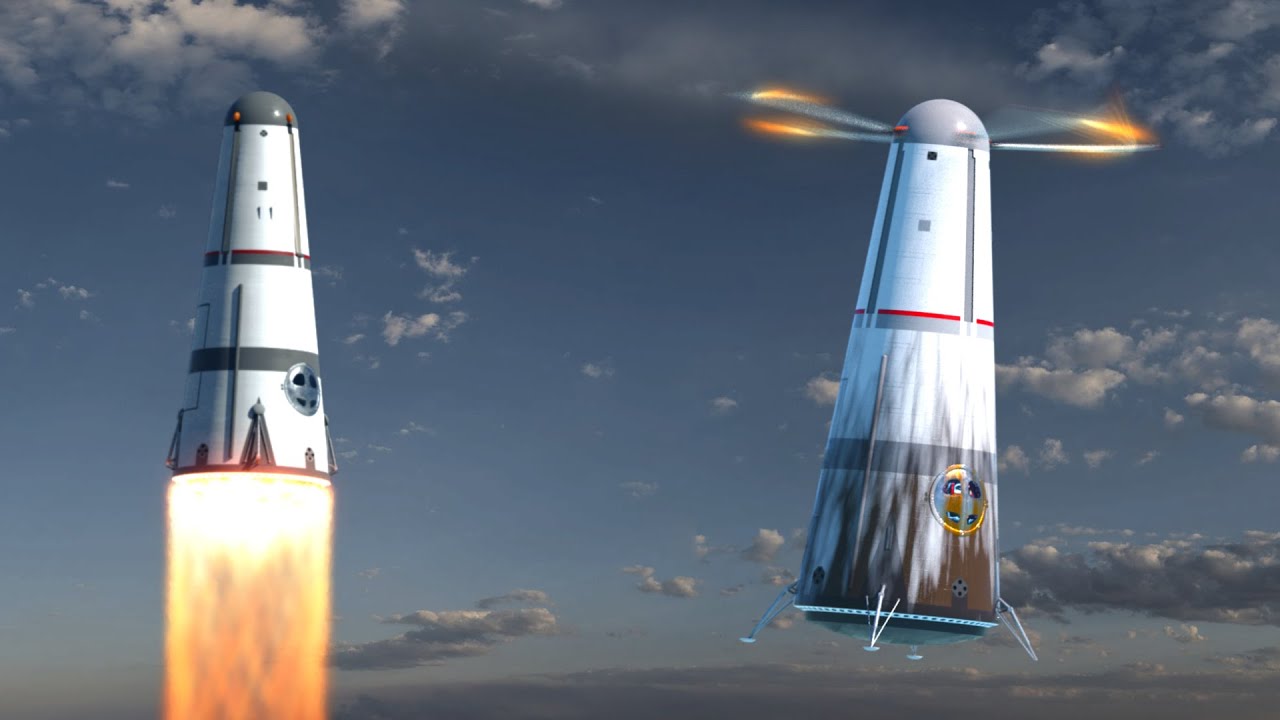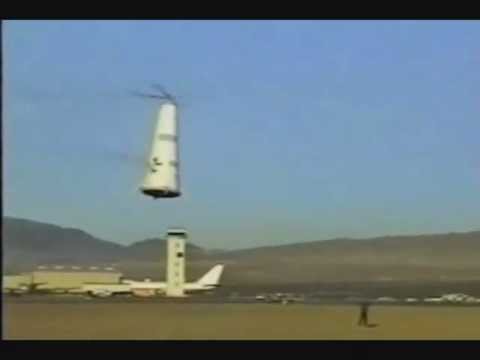Gary Hudson’s Rotary Rocket Roton design resembled the DC-X, but it was radically different in almost all particulars. While the DC-X used liquid hydrogen/oxygen propellants and sea-level modified versions of the expander cycle RL-10 engine, the Roton used LOX/kerosene propellants in a spinning aerospike engine with multiple combustion chambers where propellants were pumped by the centrifugal force of the engine’s rotation. This is (very) similar to the Bowery/Gregory patent cited in comment #4 above.
Re-entry would dissipate heat by releasing water through the base, which would absorb compression heating and create a layer of steam that would insulate the vehicle from heat. For landing, foldable rotors would be extended from the top, spun up by tip rockets, landing like a helicopter.
Gary Hudson produced a nice video to demonstrate the concept around 2000, but I can’t seem to find it on-line today. Here is a longer video from Hazegreyart showing the launch and landing concepts.
An actual vehicle was built to test the helicopter concept and its ability to be flown in the atmosphere. Here is a test flight at Mojave airport in 1999.
The story of Rotary Rocket and Roton is recounted in Elizabeth Weil’s 2002 book They All Laughed at Christopher Columbus.
I was an investor in Rotary Rocket Company—something ventured, nothing gained.

